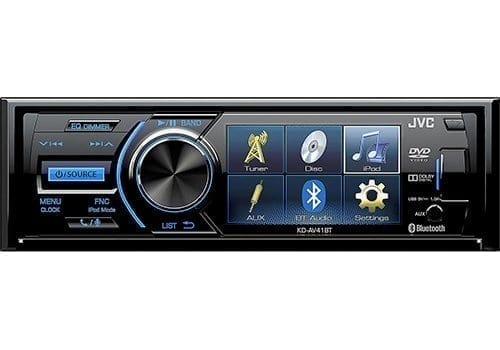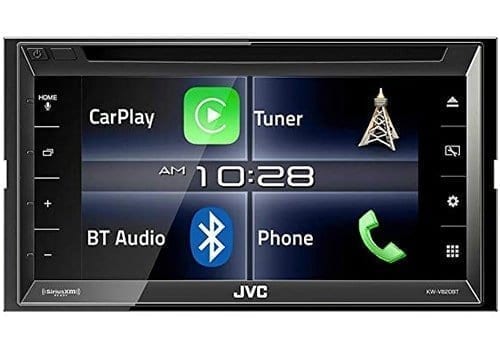Home > Learn > How To's > How to Install a Car Stereo | Easy Guide to Replacing Head Unit
Installing a head unit or replacing one can range in difficulty. Personally, I've spent as little as 30 minutes replacing a head unit, all the way up to 4 or 5 hours for the same job on a different car. There's a number of variables that can dictate how difficult and time consuming the task really is:
- Dash and trim components – In our experience, the most difficult cars are typically german. Audi, BMW, Mercedes, Volkswagen. The dash and trim components are very stubborn and tight and difficult to remove.
- Wiring – Wiring can vary from car to car. This really depends on the number of features that the car has. For example OnStar on GM cars, or just an OEM amplified stereo. These are the things you need to know prior to wiring your car and ordering the adapting harnesses (we'll get more into detail on this soon).
- Mounting the new head unit – This can be especially difficult if you choose to DIY. However, in most cases you'll find that there are adapting ‘Dash Kits' from providers like Metra and Scosche that will simplify the mounting and installation of the stereo.
At the end of the day, there are cars that I'd recommend upgrading or replacing a stereo, and cars that I would not recommend. In this guide, we'll not only walk you through the process of deciding whether you should upgrade your car's head unit we'll walk you through the process if you decide to do it!
Should I Upgrade My Car Stereo Head Unit?
Before you buy and install one of our recommended best car stereos or gps navigation units, you need to ask yourself the following questions to determine IF you should upgrade or replace your stereo and what kind of stereo you should upgrade it with.
- First question – Does your car already have an aftermarket head unit? If this is the case, your installation is greatly simplified because the wiring and mounting is already done. All you have to do is replace it. Note that you may have the change out the wiring harness that connects into the back of the unit. In this case, just cut and match up the wires color for color.
- Will upgrading my head unit cause my vehicle to lose any features/functionality? Many of the new vehicles have interdependent systems that rely on the stereo. For example, my Ram 1500 has settings for whether the horn chirps when I lock it, whether the locks automatically lock after a certain period of time, if the lights stay on after I lock the truck. All of this is controlled through my factory head unit. Many vehicles have this. If your car has features like this that are dependent on the head unit, I'd recommend keeping the stock stereo. If you're looking for more sound, you can do it without upgrading your stereo.
- Does my vehicle have multiple screens? In some cases cars have multiple screens that are interlinked. For example on many Hondas there is a head unit, then there's a display screen that displays information from the head unit like the radio station or the CD. Replacing the stereo may render the display useless. There are cases where adapters have been made, you'll want to research whether it has before you decide to replace your head unit. Or, if you don't care go ahead!
- Why am I upgrading my car stereo? If you want a subwoofer, or louder speakers, a head unit isn't your only option. If you want features that you currently don't have, like Bluetooth or an AUX input, there's also adapters for that. Figuring out if a replacement stereo is the best option for your needs is key.
- How large is my stereo opening? There's two main sizes in head units: 1DIN and 2DIN. 1DIN is the smaller of the two. It can fit in both 1DIN and 2DIN openings. 2DIN is larger and is typically dedicated to units with a touchscreen and larger screens. Here's an example of what a 1DIN (left) and 2DIN (right) look like:
If, asking yourself all of these question, you still feel it's necessary to buy and install a new head unit, here are the next steps!
Recommended Tools for Installing a Car Stereo
- Phillips and flat head screw driver set
- Plyers
- Wire Strippers
- Wrenches or sockets (usually 8mm, 10mm)
- Dash prying tool
- Stereo removal key (if needed)
- Volt meter
- Soldering Iron or Torch
- Solder
- Heat shrink or Electrical tape
- OR Wire crimps/clamps (if you don't want to solder)
1. Removing The Car Stereo
Well, the first step to installing your new head unit is to remove the old! To do this, we recommend you pop the hood and disconnect your battery before anything. This way, you don't short any fuses. Finding a blown fuse can be time consuming and frustrating so take our word that this will save you time in the long run. Once you have done this, start to remove the trim from around your stereo to access the mounting screws. I've found the trim removal instructions from Metra to be very helpful when you do this. In many cases, trim needs to be pulled in a certain direction to prevent cracking or breaking it. Metra does a great job at helping you visualize how to pull your trim off and where. Go to http://metraonline.com/, scroll down to the vehicle fit guide and enter your car. Once you've done this, click on one of the dash kits (this is the piece of plastic that you'll mount your head unit into. It replaces many parts of your trim to make a seamless fit for your new stereo). If you haven't already bought one of these dash kits, we HIGHLY recommend you do. It will simplify your install by 10 fold. Once you've selected one of the dash kits, click on the PDF link under the “Documents” on the left. You'll find full instructions for removing your trim step by step!
Your head unit will be mounted in one of two ways:
- Bolted to the dash with brackets and screws. This is the more difficult option to removing and where the Metra instructions will be extra helpful.
- Secured with mounting sleeve and spring clips. For this type, you'll want to purchase our recommended stereo removal keys.
Sticking and Stubborn Dash Trim
It's worth noting that removing trim is probably one of the more difficult tasks in removing your car stereo. You're going to be lucky if you don't hit at least one trim piece that isn't a pain. In these cases, you really want to use a trim removal tool to wedge in between the gaps and gently work your way around the trim piece. Patience is key because once you break a trim piece, there's no turning back. Start in a corner and work your way around the piece.
Once you've removed your trim according to the instructions, dismount your factory stereo and disconnect the wiring on the back of the unit.
2. Wiring Your New Car Stereo
If Metra or Scosche carries a wire harness for your vehicle, we highly recommend purchasing one along side the dash kit. Again, you can use the same link from Metra (www.metraonline.com) to find the one for your vehicle. In the case that you can't find one, you'll need to do a little research on the web to find a list of stereo wire colors on your harness and match them up with the corresponding ones on the car stereo harness. You can find a diagram here of aftermarket car stereo wires. This will help you match the aftermarket up with your factory ones.
If you find that there is a custom wire harness for your car, it's very simple, just match up color for color the wires from your aftermarket head unit harness to your custom wire harness for your car.
Connecting the Wires
There's two options for connecting the wires that you can use:
- Soldering – For all of the professional installs that I have done I would solder the two together. This ensures a permanent connection that will never short over time. It's more time consuming though. Here's how you do it:
- Strip the two wires 1/2 inch back.
- (Optional) Place 1 1/2 inch of shrink wrap on one side at least 4 inches behind the end of the wire.
- Overlap the two exposed wires and twist the two together until they are interconnected.
- Using a soldering iron or a soldering torch, heat the wire and feed in your solder slowly until it absorbs into the wire.
- Let cool and test the solder job by tugging on the two wires.
- After the wires cool, move your shrink wrap back over the soldered area. If you didn't use shrink wrap, apply electrical tape.
- Do this for each wire until all have been connected.
- Connectors – You can use butt connectors or crimp caps as well. This is a much more efficient way to connect the wires but in many cases I've seen these fail after a few years on the road. In any case, you'll either crimp the two wires together in a clamp by placing the wires in and clamping down on the crimp clam. Or your use but connectors to insert both ends into the connector and clamp both sides.
3. How to Install the New Stereo
Now that your wires are all completed you're ready to install the head unit. Connect all of the wires first. Ensure that there are no exposed wires that may be in contact with any part of the vehicle. We recommend connecting your battery and testing the stereo out prior to fully installing it back into the dash.
Once you've tested it (and it works!) you'll want to add the mounting brackets to your new head unit. If you have a dash kit, use the ones that come with the kit. If not, use the ones off of your factory stereo. If you have the dash and mounting kit, follow the instructions in the manual. If not, you'll need to test where the new head unit sits, and adjust your factory trim to make it fit. This is normally a difficult task. I'd recommend using a Dremel to make cuts and adjustments to the plastic.
Slide the stereo into the opening in the dash, ensuring that the wires behind are tucked and not pinched. Sometimes this may take a few times when the vehicle has a tight dash opening. Tuck the wires back into an opening behind the unit.
Congratulations! You're done! Let us know you you did and if you have any questions in the comments section.
Also be sure to check out our top rated lists:



I know the 8 wires for the speakers. I cannot figure out which wire from the car is the one that keeps memory on the radio. Help!
Yellow. Should be constant 12v
Hi, I seem to remember reading somewhere (quite a few years) that a pro 12″ sub and a pro 10″ sub was a good combo for listening to heavy metal 🤘 is this true?